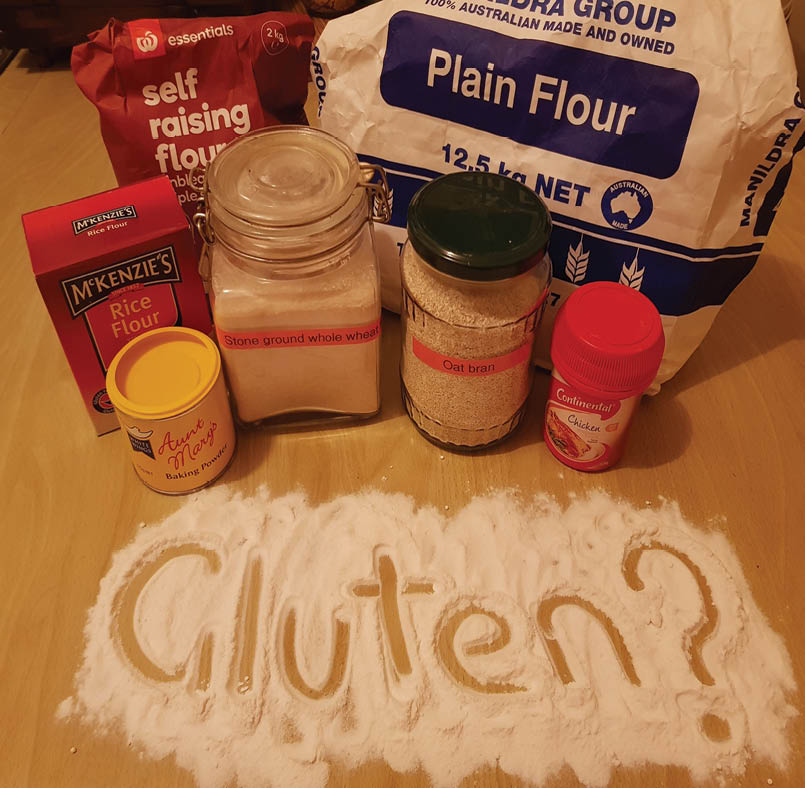

Common Food Questions
Sonya Muhlsimmer


There's a number of common food questions that people ask me about gluten free foods. Are the recipes in my book gluten free? What can I use as a substitute in a recipe that calls for wheat? I have recently been diagnosed with coeliac disease, or gluten intolerance: what can I eat?
Gluten intolerant - what to eat
66 | BWA August 2018
I thought it was time to cover this topic and hopefully answer these and other questions. You are probably asking why I'm writing about this in a bushwalking magazine. Well, as I said I have been asked a lot of questions about this topic, and besides, what would you do if your hiking buddy or someone in your group you are leading says they have been diagnosed with coeliac disease or are gluten intolerance and you are doing the menu for the trip? You have to know a bit about how to prepare the correct type of food and what they can and more importantly what they can’t eat, or you may have heard about it and just want some more information. So here it is.
Coeliac disease or gluten intoleranceCoeliac (pronounced something like see-li-ac) disease is an auto immune disorder. The body reacts to a type of protein found naturally in wheat, barley and rye, adversely affecting or damaging the lining of the small intestine. This is a complex disease, and I will keep this as simple as I can. Here goes ...The small intestines are covered in microvilli, and these microvilli are like millions of microscopic fingers covered in microfilament that are designed to increase the surface area of the small intestine. The microvilli help trap food and with an enzyme contained in the microvilli, the food breaks
down and crosses the lining of the intestine to reach the body tissues. For someone that has coeliac disease, the body’s reaction to gluten is that these microvilli break down, disappear, lose shape or flatten which damages the lining and surface area of your intestine. This means you are more than likely to have poor nutrient intake from your diet as your intestines can’t properly absorb the food you eat. The cure? You have to remove gluten from your diet; the disease can’t be cured. By the way, the small intestine has an approximate surface area of around the size of a tennis court. That’s big!
Coeliac disease is pretty common. According to Coeliac Australia it affects approximately one in 70 Australians, and apparently a lot of people from this number don’t even know they have it. Coeliac disease is one of the most under-diagnosed disease in Australia. That is shocking ... and another good reason to talk about it. So are you one of them, and how do you even know if you have coeliac disease or are gluten intolerant? If you leave this disease untreated, it can lead to serious health issues. If in doubt, take the Coeliac Australia’s Online Self Assessment for a start. It is a basic assessment but worthwhile if you are in doubt in any way, and the web site has some really good information.
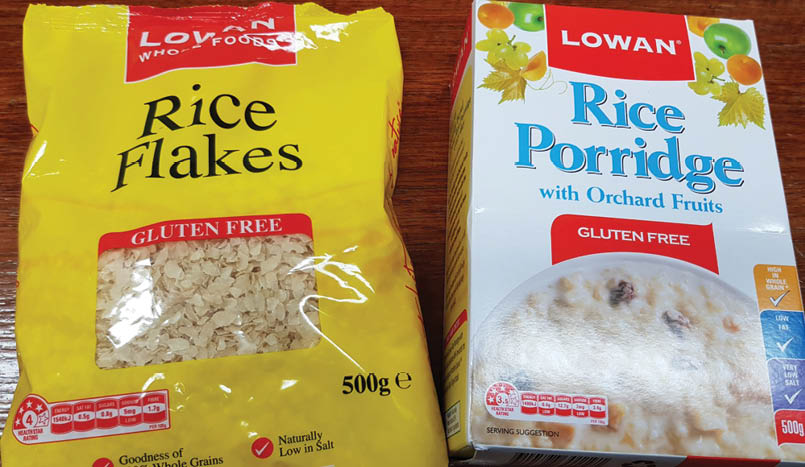
BWA August 2018 | 67
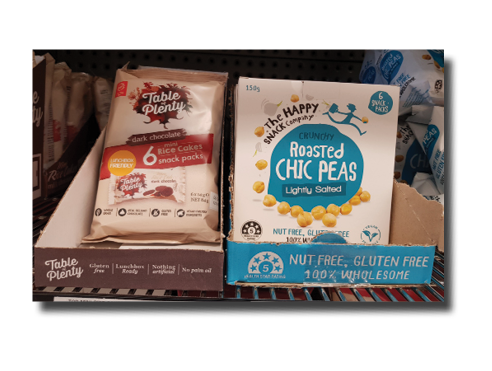


Some symptoms are diarrhoe, constipation, gas, weight loss, nausea, iron deficiency anemia, fatigue, depression, bloating, joint pains, skin rash, and severe aliments include liver disease, unexplained infertility and lymphoma which is a blood cancer. If in doubt, do some research on the symptoms you may be suffering. There is a plethora of online information, and your doctor will be able to help you. Coeliac disease is a lifelong disease, and avoiding gluten in your diet is the only way you can treat it.
Why is there so much coeliac disease now?You must be born with a genetic disposition to develop coeliac disease, but environmental factors play a role in triggering the reaction, and the cause to why some people get it and others don’t is still a mystery.
According to a scientific journal the likely rise of this disease is due to environmental factors as the rate it is growing it is too quick for genetic changes to occur. In the last century there's been significant changes in our diet and the use of antibiotics, which can alter the microflora – this is the bacteria in the gut, thus changing the reaction in the gut to gluten. Another theory is that the microflora could be different from the beginning, and this is like the flow on effect.
Gluten intolerance is a separate condition by the way. The symptoms are similar but the difference is that gluten intolerance is not as dangerous as having coeliac disease.
Let’s talk about what you can’t eatGluten is found in wheat, barley, oats and spelt, so that means food like bread, cakes, pasta, biscuits, cous cous and beer should be avoided. Simple right? Not really as gluten can also be disguised in or added to some foods such as soy sauce, vinegar, cornflour, seasonings, textured or hydrolysed vegetable protein and maltodextrin. It is also recommended to avoid foods that contain MSG, which has an additive number of 621 on the ingredients label. MSG has been reported to cause some health symptoms in coeliac sufferers so it is best to stay away from it. You will also have to learn a bit on how to read ingredients labels. The Food Standards are pretty good at food labelling these days so if the pack says Gluten Free, it usually is. Or if it says “May Contain”, well, it may contain some allergenic substances, generally due to cross-contamination in the manufacturing environment, and you may have a reaction when you consume that food. Check out the Australian Food and Grocery website for more details on labelling.

“Coeliac disease is a lifelong disease ...
68 | BWA August 2018

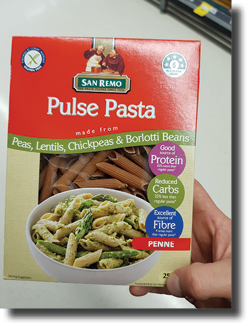
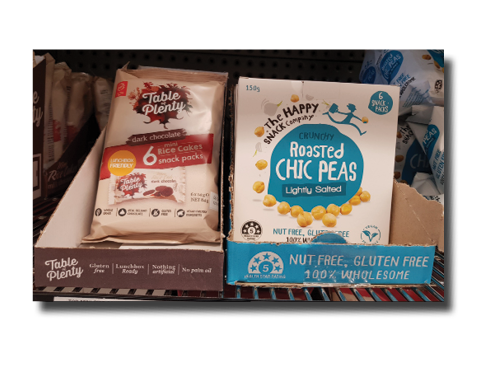
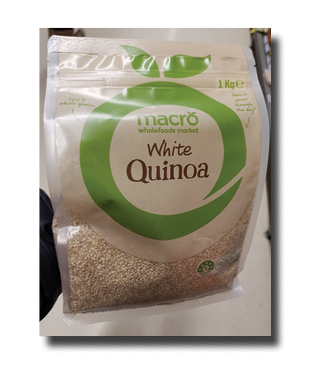
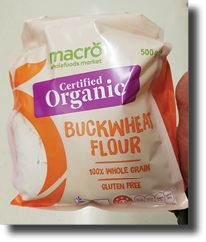
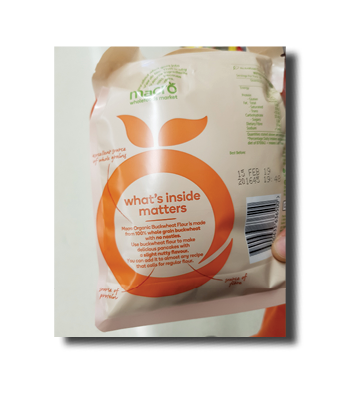
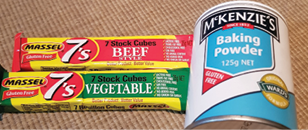
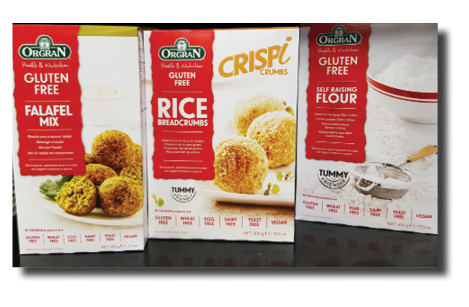
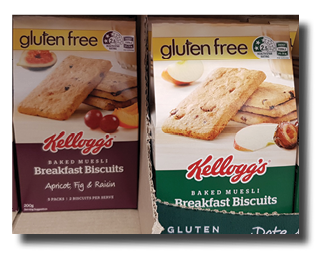
What you can safely eatThere are many naturally gluten free foods to choose from such as meat, fish, fruit, vegetables, nuts, buckwheat, polenta, legumes, quinoa and rice to name a few. There is also gluten free baking powder. If you cruise the supermarket aisle you will find a range of products that say gluten free, and products that can be used as a substitute for gluten containing products.
These are just some gluten free products available at my local Woolworths.
Rice cakes and roast chick peas as snacks.
Breakfast biscuits – however I recom-mend having these as a snack and not solely for breakfast.
Quinoa – cook it just like rice, and you can even get quinoa flakes which is great for breakfast and cooks in a couple of minutes.
Buckwheat flour – as stated on the back of the pack: you can add it to almost any recipe that calls for regular flour.
Gluten free pasta, falafel mix, rice breadcrumbs and self raising flour. Organ is the brand that does a lot of gluten free products, check them out.
Lowan brand rice flakes and rice por-ridge.
Last but not least gluten free baking powder and stock cubes are readily available.
A handy hint: if you are not sure of something stay away from it, especially some seasonings and as a substitute just add some salt, pepper, a few dried herbs and a pinch of chilli, keep it simple.
So if you hiking buddy says they are gluten intolerant or have coeliac disease, look after them and feed them well if you are in charge of the food. Do your homework – read up on the disease and learn how to read food labels, and remember to KISS - Keep It Simple, Stupid. You don’t want them to experience some of the nasty symptoms out on the trail and I'm sure you don’t want to experience their nasty symptoms as well.
BWA August 2018 | 69